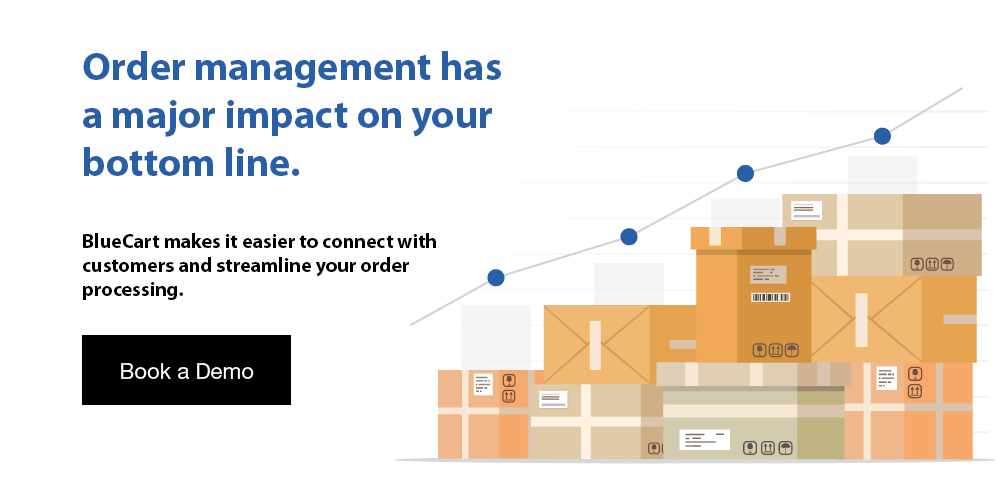A crucial part of opening a business is understanding the different reports you have to analyze in order to keep operations running smoothly. If your business deals with inventory, one of these reports is the inventory report.
Both sales and inventory reports hold valuable information. However, not all businesses track their inventory, making it difficult to report such information.
Inventory tracking allows you to generate an inventory report for each item. As a business owner, you can use these reports to gather data and make informed business decisions. These decisions can help your business thrive.

Inventory Report Definition
The definition of inventory report refers to a summary of the inventory you have on hand during a given period of time. Inventory reports can be physical or electronic, and they tend to show details regarding the amount of product you can currently sell, the inventory in transit, and the inventory you need to reorder.
A good inventory report includes up-to-date and detailed information. There may even be visuals that help clarify the total amount of in-stock inventory.
For most businesses, inventory reports help avoid overstocking inventory and stock-outs. This is especially helpful for holiday inventory management practices and to avoid overselling.
Key Takeaway: An inventory report provides businesses with essential insight into the items they currently have available to sell and which items need to be restocked.
Importance of Inventory Reporting
Inventory reporting provides insight into the business as a whole. It provides business owners with metrics that are essential to the success and growth of the company.
Inventory Tracking
Businesses that deal with inventory should be tracking their inventory on a regular basis. Effective inventory reporting systems make it possible to track product locations throughout the supply chain. This includes the food supply chain if you’re dealing with a business in the restaurant industry.
Inventory tracking is helpful for:
- Improving inventory accuracy
- Avoiding stock-outs and shortages
- Maintaining up-to-date stock levels
- Understanding inventory carrying cost and inventory valuation
Better Customer Service
Customers play a large role in the success of a business, especially when it comes to restaurant success. Keeping enough inventory on hand is beneficial for the business and for customer satisfaction and loyalty efforts.
An accurate inventory report will inform you of which items need to be reordered. This way, you can keep customers happy by having the products they’re looking for on hand.
Improved Forecasting
Inventory forecasting and demand planning allow you to use past data and trends to predict your future inventory requirements. Using an inventory report, you can manage in-stock items, avoid overstocking items, and ensure you have enough products on hand to fulfill customer orders.
Not having enough inventory on hand can create the risk of having your customers rely on competitors for the products they’re looking for. Too much inventory on hand may cause clutter and disorganization within your inventory. It will also lead to an increase in inventory storage costs.
Categorizing Inventory
It’s possible to use an inventory report to categorize your inventory. Two common ways to do so are either using an ABC analysis or by location and type.
Inventory reports show where inventory is within the supply chain in real-time. This includes whether it’s still raw materials inventory or ready-to-sell inventory, also known as finished goods inventory.
Knowing this information is crucial to understanding the cost of goods sold during each phase of your supply chain. It’s also essential for inventory management optimization.

8 Types of Inventory Reports
Each business has different inventory reports they might use on a regular basis and each one has a different purpose, audience, and insight.
Here are eight types of inventory reports you may consider using:
1. Low Stock Report
It’s common for businesses to lose money due to stock-outs. In fact, retailers lose about $1.75 trillion each year because of it. A low-stock inventory report will provide you with information regarding which items are running low.
If your business has frequent stock-outs, customers may lose trust in your company and choose to look somewhere else for what they need. Low stock inventory reports allow you to be proactive when it comes to reordering products.
2. Inventory Profitability Report
A business can track the profitability of its inventory in different ways. This is possible through SKU number profitability, trending profitability, and listing profitability.
In terms of eCommerce data, SKU profitability tracking is the most valuable. It analyzes each SKU number and generates the profitability of each one.
Listing profitability evaluates the SKU’s performance by gross and unit margins. It also looks into the implied shares per sales channel. Trending reports evaluate profitability over a certain period of time.
3. Sales Report
You can increase visibility into your cash balances and accounting processes by using a sales report. It provides businesses with accounting summaries for individual sales channels. This includes summaries regarding discounts, incomes, taxes, and refunds.
Strong sales reports break down sales into different data ranges and goods categories. They also allow you to discover trends that show your top customers and improve your forecasting efforts.
4. Purchase Order Report
Aside from tracking the inventory you currently have sitting in storage or leaving your warehouse, it’s important to also track the inventory coming in. This is possible with the help of purchase orders.
A purchase order provides businesses with insight regarding each individual order including status, activity, and contents. With a purchase order inventory report, you can keep track of fluctuating product trends, transactional details, and when inventory is coming in.
Each order has its own purchase order number. With this number, you can organize your orders and use them for invoicing. Be sure to understand the difference between a purchase order vs invoice.
5. Cost of Goods Sold (COGS) Report
One metric that most businesses are familiar with is the cost of goods sold. This is what helps appraise the bottom line.
A cost of goods sold report allows businesses to set the right price for their products, identify unforeseen growth opportunities, and manage taxes. The COGS can help you keep track of your business’s financial health, so you can make strategic decisions regarding investments and inventory management.
7. Inventory Performance Report
Knowing which products are your top-selling products, the worst sellers, and have the most year-over-year growth is crucial. This way, you can narrow down which products are sitting on your shelves.
By doing so, you can determine whether you should hold onto that product, discount it, or hold off on reordering it. When it comes to year-over-year growth, you can identify the financial performance of your business. Your inventory performance report will also provide you with insight regarding your days inventory outstanding and potential phantom inventory.
8. Customer Analytics Report
Customer acquisition and customer retention are huge factors in running a business. Finding and maintaining a loyal customer base requires the use of customer analytics.
Customer analytics reports make it possible for businesses to gain insight into the customer lifetime value of their company. This way they can learn about their biggest spenders and customers that have the highest order value. With this information, they can customize their product offerings, promotions, and marketing strategies.

Frequently Asked Questions About Inventory Reports
An insightful inventory report provides businesses with information regarding their inventory items. This way, they know which items are available to sell and what needs to be ordered. They help with stock-outs and help prevent overstocking. To learn more about inventory reports, read the following commonly asked questions.
What Is the Purpose of an Inventory Report?
The purpose of an inventory report is to provide information regarding the current inventory on hand. These reports can also provide information about which items are selling the best, the product status, and their performance based on specific SKUs or the UPC number. Inventory reports can also help prevent stock-outs and overstocking products.
You can also use an inventory report to calculate the weighted average cost of your items. Using an inventory scanner will help ensure the accuracy of your report, as will centralized inventory methods.
Are Inventory Reports Necessary for My Business?
Yes, inventory reports are necessary for businesses, especially those in eCommerce. Using inventory reports for your business can provide you with leverage when it comes to inventory planning, inventory tracking, and inventory categorization.
What Are the 4 Types of Inventory?
The four main types of inventory include:
- Raw materials inventory
- Work in process inventory
- Finished goods inventory
- Repair and operating inventory